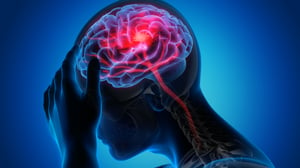An international consortium has analysed data from 873,000 people and identified 123 DNA areas linked to the risk of headaches. This study may help to find more effective drugs.
The International Headache Genetics Consortium (an international consortium of researchers from Europe, Australia and the USA) has produced the most comprehensive map to date of the genetic basis of migraines, which it is estimated affect over one billion people worldwide.
The geneticists joined forces to analyse data from more than 873,000 people who took part in various studies (around 103,000 with migraines and 770,000 as controls), with different genetic origins. As a result they identified 123 DNA regions associated with migraines, 86 of which were previously unknown.
This extensive study may help researchers better understand the biological causes of migraines and their subtypes and speed up the search for new therapeutic treatments. The precise cause of migraines is still unknown, but it is thought to be a neurovascular issue that originates either within the nerve cells of the brain or in the blood vessels of the head. Past studies in recent years have shown that genetic factors (i.e. DNA variants) play an important role, but it was never clear whether the two main types of migraine (migraines with auras and migraines without auras) had a similar genetic make-up. Some neurologists even claimed that these two types were manifestations of radically different diseases.
The key variants have been identified
As reported in the scientific journal Nature Genetics, researchers from the International Headache Genetics Consortium wanted to shed light on the genetic 'substrate' of the two most important types of migraine, as well as whether belonging to a certain ethnic group might play a role or not.
Results showed that there are both genes shared by the two types and specific genes, and that two DNA variants are definitely linked to migraines without auras, and three to migraines with auras.
Also, as expected, it emerged that a migraine is indeed a prevalently neurovascular disorder, because many of the genes identified are specific in this respect. Finally, among the genes discovered are those that regulate two neurotransmitter systems already identified as targets for two of the most innovative and effective therapeutic approaches of recent years: the calcitonin gene-related peptide or CGRP system, blocked by specific drugs, and the serotonin receptor subtypes called 1F (in technical jargon), also already targeted by specific drugs.
Possible new treatments
"Having identified genetic variants that induce migraine and that are already targeted by effective drugs," says Matti Pirinen, a researcher at Helsinki University, who took part in the study, "suggests that other drugs may be developed and targeted at new areas in the genetic code. This has encouraged us to begin further genetic studies with even larger sample groups”. This may result in new therapies, and, if possible, strategies to prevent migraines.

